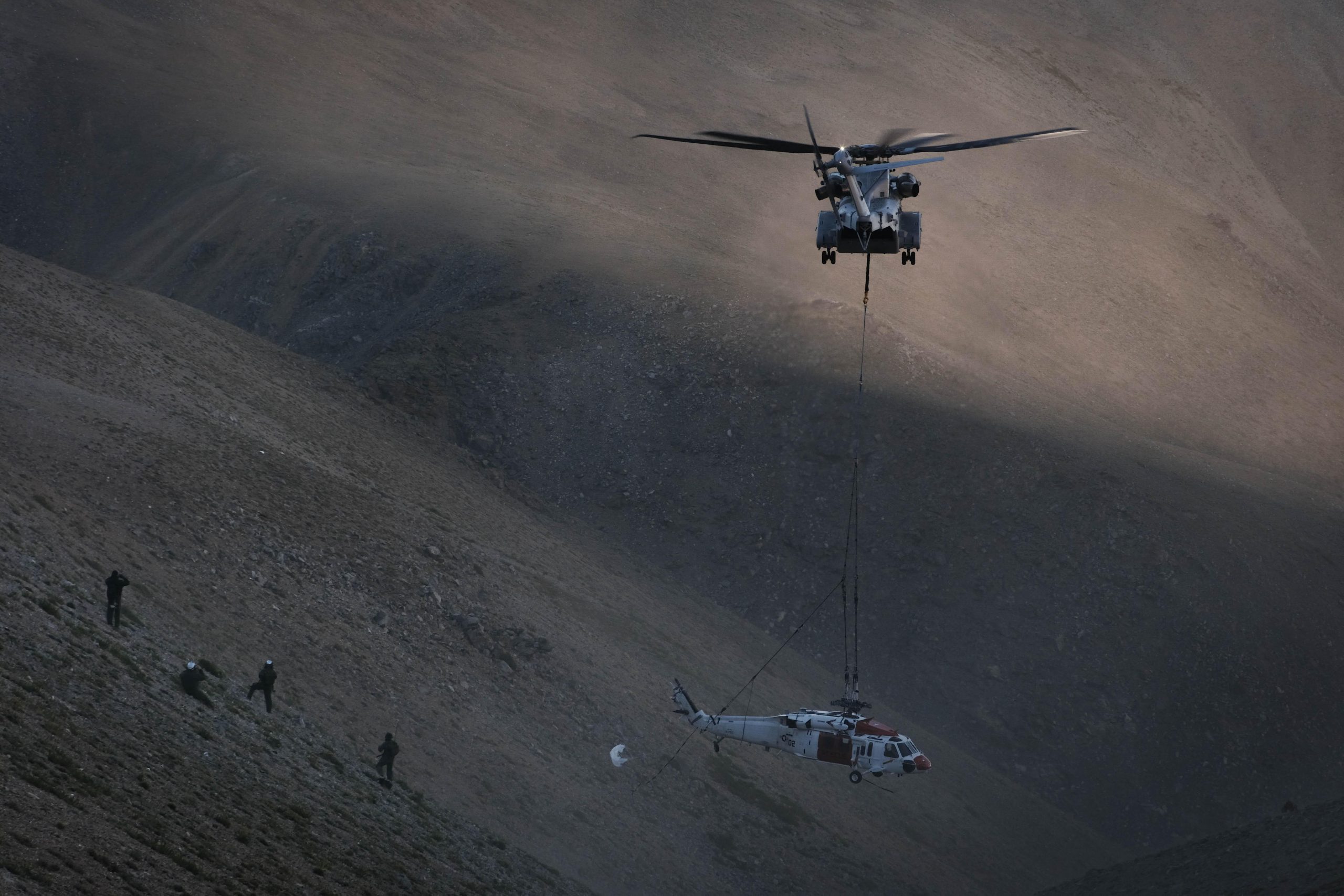Colonel Jack Perrin Provides an Update on the CH-53K, August 2021
NAVAIR released a video in July 2021 showing the progress in the new aircraft operating at night in terms of extending its range via tanking operations.
I had a chance to discuss this development with Colonel Jack Perrin, Program Manager, PMA-261, H-53 Heavy Lift Helicopters, Naval Air Systems Command at Patuxent River, Maryland.
In that video, seen below, which was released on July 16, 2021, the CH-53K King Stallion is seen executing night vision goggle helicopter aerial refueling.
And NAVAIR added in its note accompanying the video: “It is the Expeditionary Advanced Base Operations vertical, long-range, heavy-lift, logistic backbone of the Marine Corps, today and for the next fight. Day. Night. All weather.”
When I discussed the progress indicated in the video with Col. Perrin this is what he underscored: “We’ve now gone through and have validated the CH-53K’s performance in helicopter aerial refueling, both day, night, both with and without the external loads. This is extremely significant because now we move a heavy external load and extend our range so that we can really get anywhere that the Marines are going to need heavy lift logistics support within the world.
“I can imagine us taking off from the shipboard environment with a heavy 27,000 pound or more external load and extending our reach because we’re able to aerial refuel along the way, day or night, and deliver those logistics support wherever they need that. For example, we will be able in the PACOM region to reach the outer island chain and operate up and down the chain or the other supporting areas where the U.S. Navy might be operating.”
As Col. Perrin underscored: “Not only are flight operations more manageable for the flight crew but we are now safer because of the stability of the aircraft and the fly-by-wire system. One of the notes that we have from the development testing for the night refueling is that it was actually an ITT event, by which we mean that it is both a developmental test pilot and an operational test pilot conducting the test together.
“We have an increased safety margin associated with the 53K in executing its missions. And we can do so with heavier loads and get more performance from leveraging the digital backbone and its ability to work the networks when it’s operating. You’re also reducing the pilot workload and enhancing the safety when you’re flying behind the tanker. Going over long distances, the air crew is not flying their aircraft on altitude and airspeed. The aircraft’s flying itself.”
We then discussed the coming of the CH-53K to the North Carolina-based Marines.
From April through July, I have had the opportunity to spend time with II MEF and 2nd MAW, who are working the challenging transition from the Middle East land wars to European defense. And they are doing so without the benefit have having F-35s in their operating force. Both the II MEF and 2nd MAW commanders explicitly noted how important they saw the CH-53K for them in working that transition as they begin to operate the aircraft in their operating force.
And they are looking to leverage the new aircraft as they evolve their concepts of operations. Interestingly, 2nd MAW will be transitioning to the F-35B in the same time frame as the coming of the CH-53K which will provide an opportunity to think through how the two aircraft can interact in shaping the wing’s concepts of operations.
In discussing this development with Col. Perrin, he underscored the significant interaction which the CH-53K can have with the expeditionary basing capabilities inherent in the F-35B as a S/TOVAL aircraft. He underscored that “we can bring three 800-gallon fuel tanks with us. That’s 2,400 gallons of fuel. This means we can support multiple aircraft with all that fuel.
“That also means that the aircraft can land and get re-armed and receive fuel in a single landing operation at an expeditionary base rather than having to land to get re-armed and do an air-refueling to get fuel.”
CH-53KTM and King StallionTM are trademarks of the Department of the Navy
Featured Photo: A Marine Corps CH-53K King Stallion lifts a Navy MH-60S Knighthawk helicopter from a draw in Mount Hogue, California, Sept. 5, 2021. The Knighthawk conducted a hard landing during a search-and-rescue mission, which resulted in no casualties or injuries of its crew. The two-day operation was the first official fleet mission for the CH-53K King Stallion, as it is currently undergoing an operational assessment while the Marine Corps modernizes and prepares to respond globally to emerging crises or contingencies. (U.S. Marine Corps photo by Cpl. Therese Edwards)

